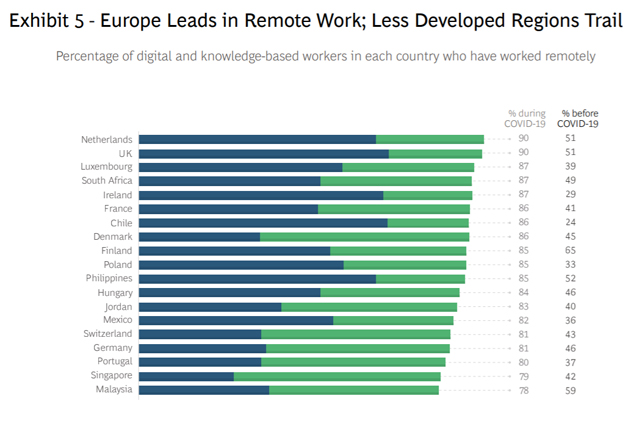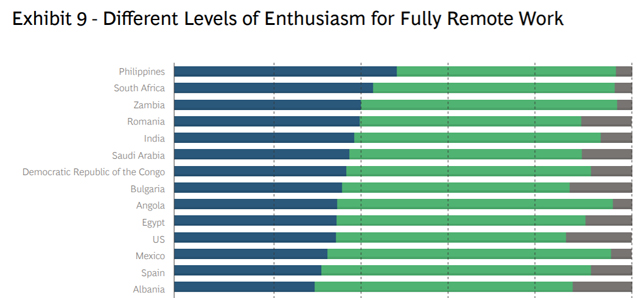
(SPOT.ph) We're more than a year into the pandemic, which means that a number of previously office-based employees have almost permanently transformed a part of their home into a working space. The work-from-home scheme has become the labor force's solution as a COVID-19 safety measure in an effort to further decongest public transportation and office buildings. And while it's taking a toll on mental health (as most things are in this pandemic), a study conducted by SEEK Asia (parent company of JobStreet), Boston Consulting Group, and The Network showed that up to 49% workers in the Philippines prefer going completely remote.
The study titled "Decoding Global Ways of Working," which is the second in a series about the pandemic’s long-term impact on work, surveyed 208,807 workforce respondents in 190 countries with more than 5,000 of them coming from the Philippines. The sample includes about an equal proportion of men and women, who are mostly from commerciial industries; and is mostly 20 to 40 years of age. The survey was conducted between October and early December of 2020.
Shift to Work-from-Home Scheme During COVID

Europe leads in the transformation to remote working, but the Philippines also showed a significant digital shift in an effort to adapt to the "new normal" changes. Before COVID, only 52% Filipino workers were working remotely, but this spiked to 85% during the pandemic.
The Philippines also has the highest percentage when it comes to the level of enthusiasm for fully remote work. Up to 49% prefer completely remote work, while the rest can manage a combination of remote and onsite work. A very small percentage wants to go back to completely onsite work.

It is clarified in the survey that distance work is most prevalent in digital and knowledge-based jobs like information technology, the media, arts and creative fields, and research. An average of 70% people in this type of job are already working remotely, but work-from-home arrangements are significantly lower (51%) for traditional office jobs such as sales and purchasing and even lower (34%) for physical and social jobs like social care and manual work.
A country's response to COVID-19 also plays a significant role in how much its people prefer remote work. Countries "are doing what they can to keep the genie in the bottle," the study said. As of May 2, the Philippines' total number of cases is at 1,054,983 with 71,472 active cases.
Interestingly, about 89% of the global workforce prefer going fully or partially remote even after the pandemic. Of these, 24% of the respondents want to work from home for the whole week; 25% prefer going to the office for two days and working remotely for three days. Up to 64% of workers also now prefer flexible hours with only 36% interested in keeping the status quo of a 9-to-5 job.
The ongoing pandemic has changed the way we want to work. The digital shift proved that meetings can actually be e-mails, that managers don't always need look over their workers' shoulders, and a strict 9-to-5 isn't always productive.
[ArticleReco:{"articles":["85918","85996","86036","85976"], "widget":"Hot Stories You Might Have Missed"}]
Hey, Spotters! Check us out on Viber to join our Community and subscribe to our Chatbot.
We are now on Quento! Download the app and enjoy more articles and videos from SPOT.ph and other Summit Media websites.
Source: Spot PH
No comments:
Post a Comment